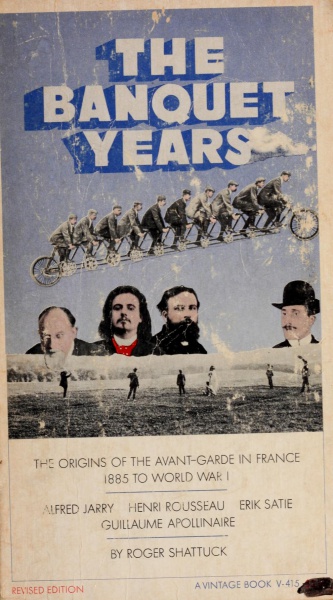Martin Esslin: The Theatre of the Absurd (1961–)
Filed under book | Tags: · absurd, history of theatre, language, theatre

“In 1953 Samuel Beckett’s Waiting for Godot premiered at a tiny avant-garde theatre in Paris; within five years, it had been translated into more than twenty languages and seen by more than a million spectators. Its startling popularity marked the emergence of a new type of theatre whose proponents – Beckett, Adamov, Ionesco, Genet, Pinter, and others – shattered dramatic conventions and paid scant attention to psychological realism, while highlighting their characters’ inability to understand one another. In 1961, Martin Esslin gave a name to the phenomenon in his ground-breaking study of these playwrights who dramatized the absurdity at the core of the human condition.
Over five decades after its initial publication, Esslin’s landmark book has lost none of its freshness. Authoritative, engaging, and eminently readable, The Theatre of the Absurd is nothing short of a classic: vital reading for anyone with an interest in the theatre.”
First published by Anchor Books, 1961
Second edition first published by Pelican Books, 1968
Third edition first published by Pelican Books, 1980
Review (Lionel Abel, Partisan Review, Summer 1962, pp 454-459)
Esslin’s article preceding the book (The Tulane Drama Review 4:4, May 1960)
PDF (1961 Anchor Books edition, 20 MB, no OCR, added 2014-5-3)
multiple formats (1972 Pelican Books reprint of the second edition [1968], 463 pp, at Archive.org)
PDF (1991 Penguin Books reprint of the third edition [1980], 480 pp, 58 MB, no OCR)
Roger Shattuck: The Banquet Years: The Origins of the Avant-Garde in France, 1885 to World War I., Rev. ed. (1955/1968)
Filed under book | Tags: · 1880s, 1890s, 1900s, 1910s, absurd, anarchism, art, art history, avant-garde, cubism, dada, dreams, france, literature, logic, montage, music history, painting, pataphysics, poetry, theatre, typography

In this book Roger Shattuck portrays the cultural bohemia of turn-of-the-century Paris who carried the arts into a period of renewal and accomplishment, and laid the ground-work for Dada and Surrealism.
“…Then came the idea–a kind of gambler’s hunch–that the trio Rousseau-Satie-Apollinaire represented several significant aspects of the period and could reveal them better than any single figure. The idea would not die. [..] Jarry had forced his way into the group and established himself close to the center of things. He helped clarify my underlying subject: how the fluid state known as bohemia, a cultural underground smacking of failure and fraud, crystallized for a few decades into a self-conscious avant-garde that carried the arts into a period of astonishingly varied renewal and accomplishment. [..] An enormous amount has been written on this era and these men since the first edition of this book in 1958. I have taken account of some of it by changing those passages where new facts have come to light.” (from the Preface to this edition)
First published in 1955
Publisher Vintage Books, 1968
397 pages
Review (Alfred Kazin, The Reporter, 1958)
Review (Sidney Tillim, College Art Journal, 1959)
Review (Justin O’Brien, The Saturday Review, 1958)
PDF (115 MB, no OCR)
Comment (0)
